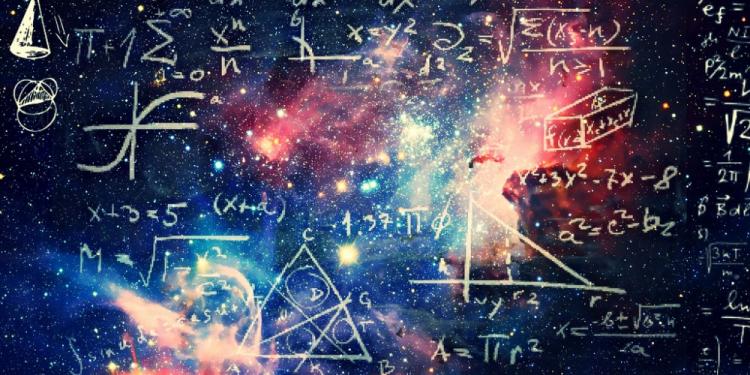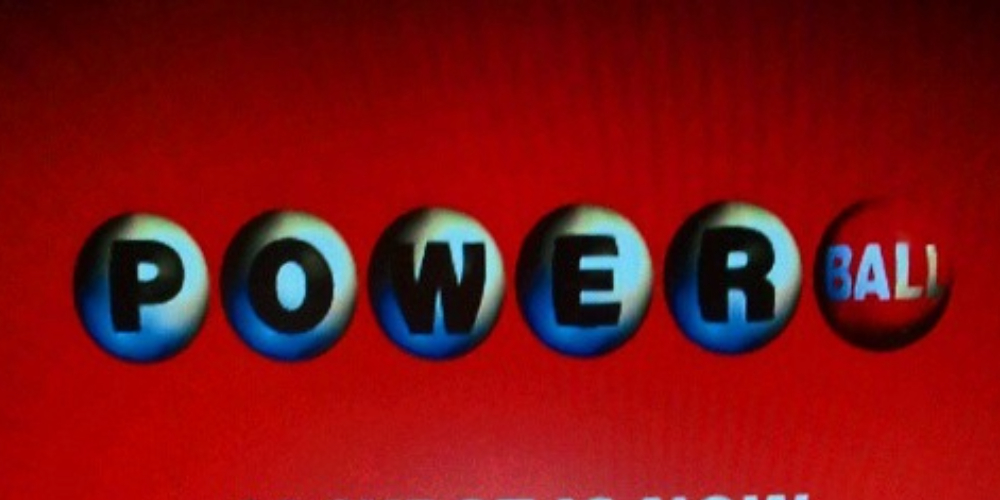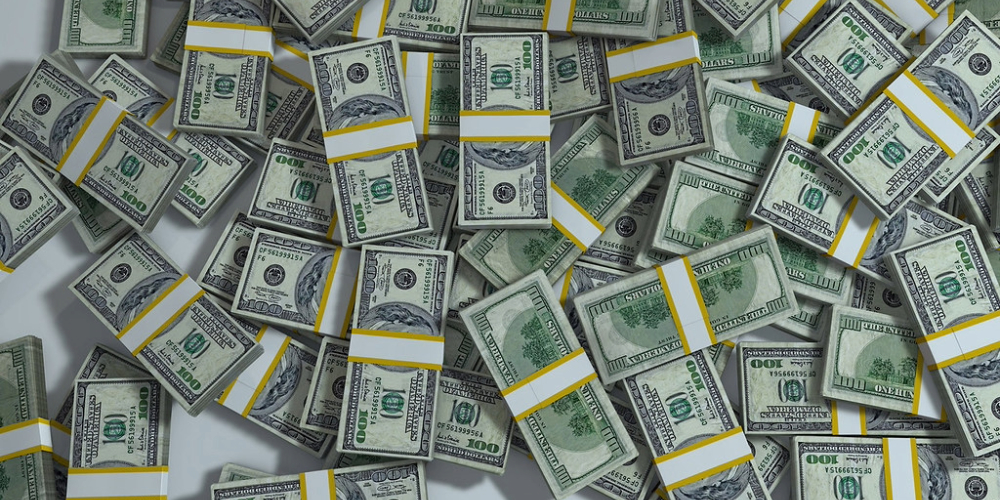The Mathematics Behind Winning The Powerball Jackpot
Posted: December 22, 2023
Updated: December 22, 2023
Playing the lottery is a numbers game. Afterall, someone has to win, right? Though all ticket holders have an equal chance of collecting a massive Powerball or Mega Millions jackpot, there are some factors which can improve your winning chances, if only by a miniscule amount. So let's dive into the math behind all lottery games.

Acquiring life-altering wealth from a mere $2 ticket seems surreal, enticing many Americans to pursue this elusive dream on a weekly basis. Remarkably, in 2020 alone, Americans funnelled a staggering $90 billion into lottery games, especially targeting the Powerball jackpot. As lotteries progressively up the ante, with increasing difficulty resulting in more losing tickets, the allure of colossal jackpots intensifies, prompting a surge in ticket purchases and subsequently boosting state revenues.
However, for those contemplating participation in the lottery by buying tickets at theLotter, it’s crucial to understand the realistic odds of winning any money, let alone the monumental jackpot. Here at Gamingzion.com we delve into the intricate mathematics underpinning lotteries, aiming to decipher the probability of hitting the jackpot while offering strategic insights to potentially enhance these odds.
Chances Of Winning The Powerball Jackpot
The Powerball jackpot differs from a standard Pick-6 lottery as it operates as a Pick-5+1 game, demanding precise selection of the bonus ball, which could even match one of the white balls. This setup significantly heightens the challenge of securing the jackpot, despite maintaining the appearance of a Pick-6 system. Securing a minor prize in Powerball is possible by just hitting the bonus ball, and since the Powerball jackpot is the final draw, every player retains a chance to win until the drawing concludes.
Bagging the Powerball jackpot necessitates the accurate prediction of the 5 winning numbers from the 45 white balls, alongside the exact match for the bonus ball. In the original 1992 version of Powerball, the potential outcomes were calculated as:
(455) x 45 = 45 x 455 x 40 = 54,979,155.
According to online lottery news in the US, as the original 1992 Powerball drawing revealed, each ticket faced daunting odds of a mere 1 in 55 million to secure a victory. To put this into perspective, the likelihood of hitting this jackpot was slimmer than flipping a coin and landing heads 25 consecutive times, a probability calculated at approximately 33.5 million when raised to the power of 2.
From The Powerball Jackpot To The Mega Millions
The allure of big-money lotteries, notably the Powerball jackpot, sparked immense success for the participating states, generating substantial revenue from lottery ticket sales.

Witnessing this triumph, more states joined the fray, introducing their own Pick-5+1 lotteries, eventually converging into what is now known as Mega Millions. Presently, all 45 states vending lottery tickets offer both Powerball and Mega Millions (with exceptions in Alabama, Alaska, Hawaii, Nevada, and Utah).
Keep in mind that you can also play Mega Millions from outside the US. Over time, these lotteries periodically tweak their ball counts, consistently tending toward configurations that heighten the challenge of securing the jackpot. Even minor increases in the number of white balls wield a significant impact, and Powerball and Mega Millions have explored several such adjustments.
Mega Millions vs The Powerball Jackpot
In the present setup, Mega Millions operates with 70 white balls and 25 bonus balls, while Powerball involves 69 white balls and 26 bonus balls. Powerball encompasses 292,201,338 possible outcomes, marginally tilting the odds in favour of being slightly easier to win than Mega Millions. To simplify, an estimate of 300 million outcomes suffices for both lotteries.
Amidst these alterations, scoring a win in a 2022 Powerball jackpot drawing dwindles to a mere 1 in 292 million per ticket. Consequently, the task of clinching victory in Powerball or Mega Millions surpasses the challenge of flipping a coin and landing heads 28 times consecutively, which, when compared to 25 consecutive coin flips, amplifies the difficulty significantly to a mere 1 in 8 chance.
More Draws And Increased Ticket Prices
Notable shifts in the lottery landscape involve ticket price hikes from $1 to $2 and an increase in drawing frequency: now featuring 3 Powerball and 2 Mega Millions drawings per week, as opposed to the earlier once-weekly draw. These modifications have led to the emergence of larger, more monumental jackpots. In January 2022, the Powerball jackpot surged past $500 million following numerous successive drawings without a winner. By April 2022, the Powerball jackpot rebounded, crossing the $300 million mark once more. Such occurrences aren’t uncommon: both Powerball and Mega Millions have hit the $300 million jackpot mark over 50 times and the $500 million jackpot threshold 20 times.
Where Does The Money Go?
Keep in mind: Each dollar amassed in those jackpots is essentially funded by the purchase of losing tickets by other players. Out of every ticket sold, one dollar contributes to prizes, while the rest accounts for revenue. Almost the entirety of the prize pool funnels into the jackpot, making its value a rough approximation of the volume of unsuccessful tickets across multiple draws. For instance, when the jackpot reaches $300 million, an estimated 300 million losing tickets have been bought from top online lotto sites in the US since the last jackpot winner emerged.
Probability Of Winning A $300 Million Powerball Jackpot
The likelihood of purchasing a ticket and not securing the jackpot is calculated as 1 – 1/N, where N represents the total outcomes (302,575,350 for Mega Millions). Assuming independence between tickets, the chances of none of them clinching the jackpot can be estimated as:

(1−1/N)^T
When N = 302,575,350 and T = 300,000,000, the probability computes to 37.1%, roughly 1 in 2.7.
What If There Were A Billion Powerball Jackpot Tickets?
Simply adjust T to 1,000,000,000. The probability of a billion unsuccessful tickets is approximately 3.7%, roughly 1 in 27. Now, let’s validate this against real data. Up to February 2022, Powerball and Mega Millions, in their current formats, have witnessed 67 jackpot payouts. Among these, 27 out of 67 (40.3%, 1 in 2.5) exceeded $300 million, while 3 out of 67 (4.5%, 1 in 22) surpassed $1 billion. The accuracy of the mathematical predictions is striking!
There’s a correlation to the significant mathematical constant, denoted as ‘e.’ The value of e can be described as the limit of:
(1+1/N)^N
As N progressively increases, approaching roughly 2.718. This definition also signifies that 1/e represents the limit of:
(1−1/N)^N.
In our earlier formula, setting N and T at 300 million reveals that 1/e roughly equates to the probability of witnessing 300 million consecutive unsuccessful Mega Millions tickets. Extending this to T being 600 million, it suggests there’s approximately a 1/(e^2) chance (1 in 7.4) of observing 600 million sequential unsuccessful tickets, estimating the likelihood of a Mega Millions jackpot swelling to $600 million before a winner emerges. Similarly, we can approximate a 1 in 20 chance of a jackpot surpassing $900 million before a win and a 1 in 400 chance of it exceeding $1.8 billion without a winner.
What If I Bought All the Tickets?
Is there a possibility of turning a profit by playing the Mega Millions or Powerball jackpot lotteries? To unravel this, let’s consider what would occur if all 302,575,350 Mega Millions tickets were purchased. Acquiring every ticket ensures a guaranteed jackpot win, alongside claiming every smaller prize within the lottery. By computing the frequency of each small prize’s win and tallying the overall amount secured (excluding the jackpot), insights emerge. Mega Millions, with its setup of 70 white balls and 25 bonus balls, partitions the 70 white balls into 5 winning balls and 65 losing balls. Here’s the catch: if every ticket is bought, the winnings amount to nearly $75 million, jackpot included! However, this tactic comes with a hefty price tag of $605 million.
Reasons Why Buying All The Tickets Doesn’t Work
Yet, is purchasing all the lottery tickets still a profitable endeavour? At first glance, it might seem profitable if the jackpot exceeds approximately $530 million. However, this presumption holds false for two primary reasons:
- The Powerball jackpot is disbursed in instalments spread over 20 years. Most winners opt for a smaller immediate payout, typically around half the advertised jackpot.
- In scenarios where two or more individuals clinch the Powerball jackpot, the prize is evenly divided. When the jackpot exceeds $500 million, this occurrence transpires roughly one-third of the time. Additionally, there’s the risk of others attempting the same strategy of purchasing all tickets.
Head Over To theLotter To Try Your Luck
Throughout the history of lotteries, a solitary ticket has surpassed the $530 million mark only thrice, with two of these wins occurring in 2021. Interestingly, the acquisition of every ticket has been attempted numerous times in smaller lotteries across the U.S. and Europe. Some lotteries even offer larger prizes as their jackpots inflate, contributing to significant wins.
But the truth is that not even AI can help you get closer to winning. Nevertheless, if you’re still dreaming of winning, then we at Gamingzion.com suggest heading over to theLotter. They offer virtually every lottery under the sun, including the Powerball and Mega Millions, with the chance to try your luck on smaller paying games, or the big life-changing lotteries.
Click here to try the lotto at the theLotter












